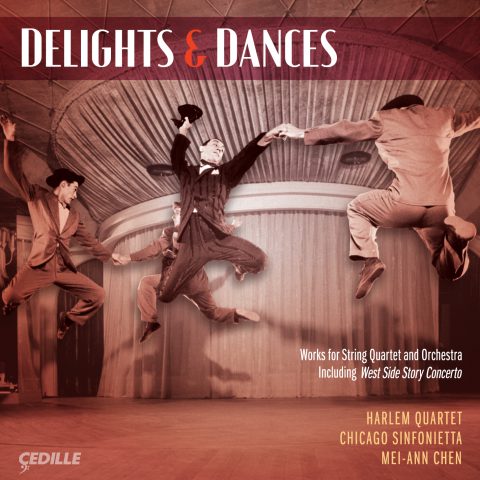| Subtotal | $18.00 |
|---|---|
| Tax | $1.85 |
| Total | $19.85 |
Store

Store
African Heritage Symphonic Series – Vol. III
Chicago Sinfonietta, Paul Freeman
Katinka Kleijn, Coleridge-Taylor Perkinson, Michael Abels
Works by four leading Black American composers comprise the third and final installment of Cedille Records’ acclaimed African Heritage Symphonic Series. Volume III features compositions from the last quarter of the 20th century performed by the Chicago Sinfonietta led by maestro Paul Freeman, “one of the finest conductors our nation has produced” (Fanfare). Freeman spearheaded the landmark Black Composers Series of Columbia LPs in the 1970s, which inspired the new undertaking.
Renowned composer David Baker (b. 1931) performed and recorded as a jazz trombonist with Quincy Jones, Maynard Ferguson, and Lionel Hampton. He later became enamored of the cello but never abandoned his jazz roots, as his evocative and highly virtuosic Cello Concerto (1975) beautifully demonstrates. Soloist on the CD is the noted young Chicago Symphony Orchestra cellist Katinka Kleijn.
Coleridge-Taylor Perkinson (1932-2004) studied with Earl Kim at Princeton and with expatriate African American conductor Dean Dixon in the Netherlands. He co-founded New York’s Symphony of the New World and composed a tribute to Charlie Parker for the Alvin Ailey dance company. Perkinson’s Generations: Sinfonietta No. 2 for Strings (1996) draws on a wide range of influences, displaying the composer’s musical wit and uncommon ability to transform familiar melodies.
William Banfield (b. 1961) is probably the most noted figure among the younger generation of African American composers. His music echoes his belief that the juxtaposition of styles in pop music has prepared listeners for similar explorations in art music. That credo is particularly evident in his eclectic, percussion rich Essay for Orchestra (1994). One conductor called the piece “. . . a huge, Wagnerian Jazz Romp.”
A genuine rising star, Los Angeles-based composer Michael Abels’s (b. 1962) Global Warming (1990) has multiple meanings. Its opening passage suggests a vast, arid desert, but it soon moves on to lively Irish and Middle Eastern sounding themes. The jaunty congruence of these culturally disparate sounds connotes a very different kind of “Global Warming.” The piece has received more than 100 performances and was the first work by a Black composer to enter the repertory of South Africa’s National Symphony.
Program Notes
Download Album BookletAfrican Heritage Symphonic Series - Vol. III
Notes by Dominique-René de Lerma
The quartet of composers represented here have a particular distinction in common: Each displays remarkable stylistic versatility, working not just in concert idioms, but also in film music, gospel music, and jazz.
Album Details
Total Time: 58:45
Recorded: May 21 & 23, 2002 in Lund Auditorium at Dominican University, River Forest, IL
Producer: James Ginsburg
Engineer: Bill Maylone
Front Cover Photographs: “Acacia Tree, Africa” by Stuart Westmorland © The Image Bank. Coleridge-Taylor Perkinson photo courtesy of the Center for Black Music Research, Chicago IL. William Banfield photo by Andy Marino. Michael Abels photo by Rick Castro
Graphic Design: Melanie Germond
Notes: Dominique-Rene de Lerma
Sara Lee Foundation is the exclusive corporate sponsor for African Heritage Symphonic Series, Volume III. This recording is also made possible in part by grants from the National Endowment for the Arts & The Aaron Copland Fund for Music.
©2002 Cedille Records/Cedille Chicago
CDR 90000 066



